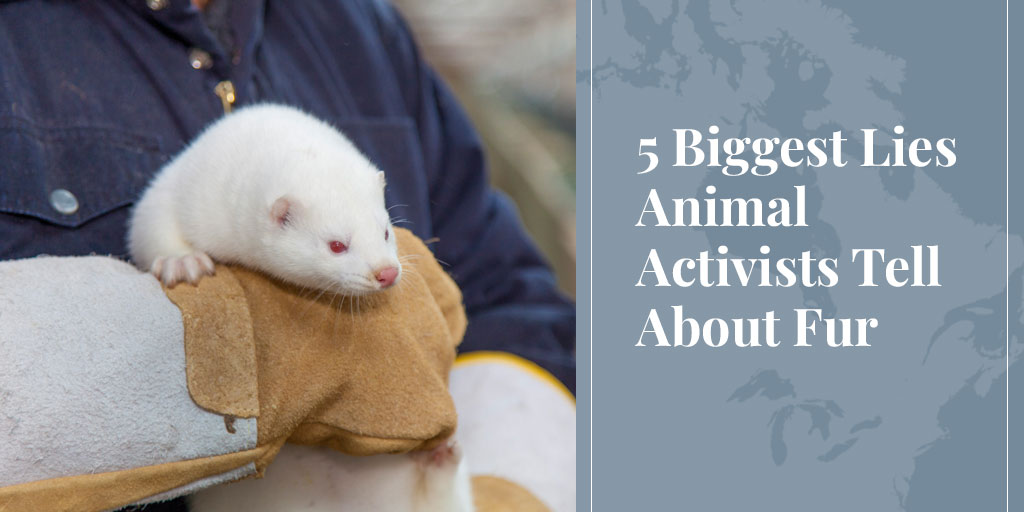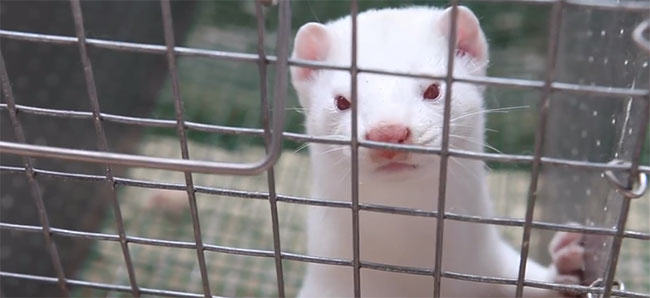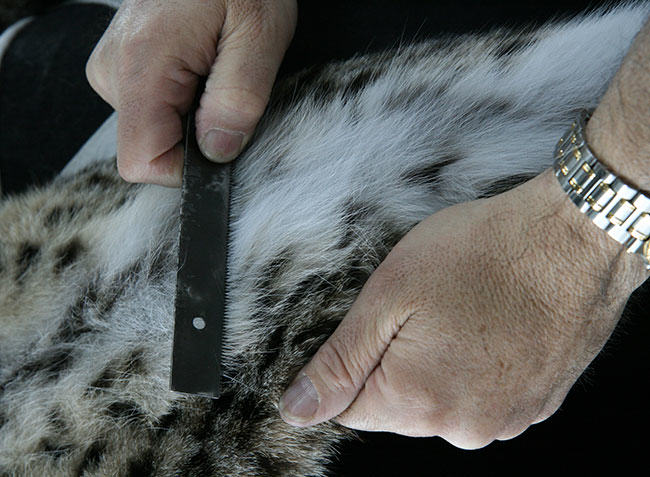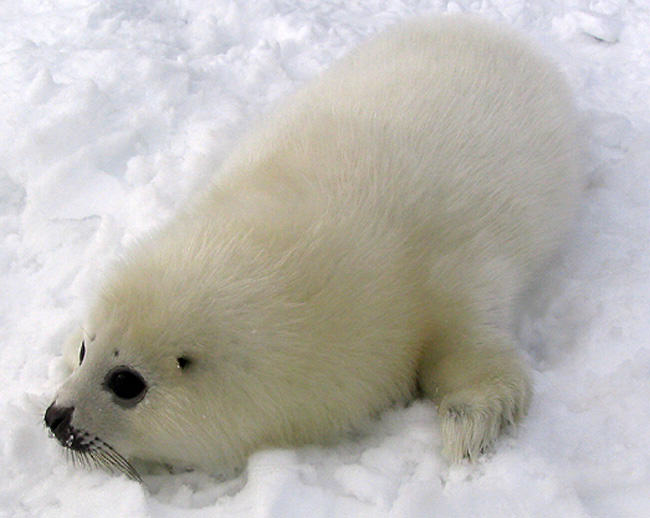
The easiest way for animal activists to further their agenda is to lie, and when it comes to the fur trade, that means portraying us as a cruel industry that mistreats animals. We don’t like giving animal activists credit, but there’s no denying how successful they’ve been at spreading their lies. They appear so frequently in traditional media, blogs and comment sections, that members of the general public can hardly be blamed for believing that at least some of this horrible stuff must be true.
Well, it isn’t, and we are here to set the record straight about the Five Biggest Lies Animal Activists Tell About Fur.

Activist Lie #1: Animals on fur farms are skinned alive. Take a moment to consider this and you’ll realize it makes no sense. Not only is skinning an animal alive illegal and utterly immoral, it would also be dangerous for the operator, would increase the risk of damaging the pelt, and would presumably take longer than skinning an animal that was euthanized. (Is it easier to cut your dog’s nails while he is excited or when he’s been sleeping?) Farming is a business, and businesses need to be profitable – so why would anyone adopt a practice that is dangerous for their staff, damages the product, and takes much longer than doing it properly? The simple answer is that they wouldn’t, which is why animals are never skinned alive for the fur trade.
In fact the horrible activist video that started this vicious myth has now been exposed as a complete fraud – the cruel acts it shows were staged for the camera!
SEE ALSO: 5 REASONS WHY IT’S RIDICULOUS TO CLAIM ANIMALS ARE SKINNED ALIVE
Activist Lie #2: Most furs come from China where animal welfare laws don’t exist. Therefore, most animals used in the fur trade are mistreated. The clever part of this lie is that, if true, it would render irrelevant the high standards of animal welfare on North American and European fur farms. If most fur comes from China, who cares how well farmers care for their mink in Wisconsin or Denmark?
There are two problems with this argument. First, it doesn’t matter where a farm is (it could be on the moon!), if farmed animals do not receive excellent nutrition and care, they will not produce high-quality fur. In fact, China does have animal welfare laws and is in the process of introducing Western standards to fur farming, but even without them Chinese fur farmers have a strong economic incentive to keep their animals healthy.
Second, and more to the point, while it is true that many fur garments are now cut and sewn in China where labour costs are lower, the fur pelts used to make most garments sold in the West originally came from European or North American farms. In fact, more than 90% of European and North American farmed mink and fox – and North American wild furs too – are sent to China to be transformed into apparel and accessories.

Activist Lie #3: Animals chew off their paws to escape steel-jawed leg-hold traps. This lie refers to very old trapping methods that are no longer permitted or used. Decades ago, some animals (especially muskrats) would sometimes have bones broken in old-fashioned leg-hold traps, allowing them to pull free. This does not happen with the new padded and off-set foot-hold traps. In fact, these new live-holding traps cause so little damage, they are used by biologists to catch and release (unharmed) wolves, lynx, otters and other animals for radio collaring or relocation. Meanwhile, the great majority of fur-bearers (including muskrats) caught for their fur are now taken in highly effective quick-killing traps, eliminating the possibility of a trapped animal being left alive.
Activist Lie #4: Fur farms are “not subject to federal regulation”. This is a sneaky deception by animal activists that suggests that fur farming is “unregulated” and therefore without standards to protect the well-being of the animals. What is intentionally not explained is that federal regulations generally concern only food safety issues related to livestock produced for human consumption. Fur farms, however – like all farms – are indeed regulated by municipal and state or provincial laws. Furthermore, farmers who mistreat or do not provide proper care for their animals can be prosecuted under federal (and state/provincial) animal-cruelty laws.
SEE ALSO: CALLING PETA: U.S. FUR FARMING IS STRICTLY REGULATED

Activist Lie #5: They kill “baby seals” in Canada. If we had a dime for every time we’ve heard this lie, we could buy a dozen beautiful seal-skin coats! In fact, the hunting of nursing harp seal pups has been banned in Canada since 1987. For the last 30 years, harp seals can only be hunted after they have moulted their first fluffy “whitecoat” fur. By the time the hunt legally opens, the seal pups have been weaned and are on their own, preparing to migrate to their Arctic summer feeding grounds. (Their mothers have left, to breed again, before also heading north for the summer.) But these easily verifiable facts do not stop animal activists from continuing to illustrate their fund-raising campaigns with photos of fluffy “whitecoats”. Why let facts spoil a great story that has raked so many millions into their coffers from well-meaning supporters?
What you can do. The next time you hear someone spreading these 5 Biggest Lies Animal Activists Tell About Fur, set them straight! We all know that if people hear lies often enough, they start to believe them. Well it works both ways. People need to hear the truth more often to believe it … so let’s be sure that they do!
***
To learn more about donating to Truth About Fur, click here.











Anilmals still suffer and die. That’s the truth.
Exactly. The person who wrote this article and all people running or working on fur farms or buying fur products have zero shame, integrity, humanity or conscience!! Absolutely disgraceful!!
Have you ever actually met any of these people? You might find you have a lot in common if you actually gave them the time.
Since we can just throw hypotheticals out there, I bet if we take that same population of people polled, we’d find a strong correlation among the people who responded “acceptable under any circumstances” with narcissism, aggression, utilitarianism, lack of empathy, insecurity and vanity. Oh and “Life or death” sounds a lot like “black or white” with regards to your silly sliding scale. While “or simply because they hate PETA” is either the most shameful excuse I think I’ve ever heard mentioned or the laziest. and since you asked, I would prefer delusions.
Fair enough. But as you say, these were hypotheticals, so I’ll also propose that if you asked 1,000 people how they felt about fur, perhaps one would respond “acceptable under any circumstances” and one with “because I hate PETA”. We don’t need to concern ourselves with such views since they are at most extremely rare, and may not be held by anyone.
No man can tell another what to do. I truly believe and embrace that philosophy, but why not just freaking own up to the fact that your love of fur is more important to you than another living being’s life? It just seems a little weak to try and convince people it’s ethical or moral or whatever. Be a man and just freaking own it. And, no, I’m not a whacko vegan or animal rights nut job, I just think people should state their beliefs in the most succinct and truthful way possible so we don’t end up with half truths and bs arguments. Quit justifying and just own it, morality will work itself out in the long run and in the meantime you’ll look super dope in that fur.
Public relations don’t work like that. Committed fans of fur have no problem “owning up to the fact”, just as opponents have no problem “owning up” to their position. But in the PR world, the battle is for the hearts and minds of people who are still undecided. Perhaps they have a moral or ethical dilemma, and they need help resolving this. These people are the primary targets of our PR efforts and the reason we explore moral and ethical arguments in depth.
So you don’t deny that your love of fur is more important to you than another beings life?
It would be silly to make such a statement, and you know it. Can we assume that you are vegan, and would never take an animal life for food or clothing?
Why is that a silly statement? That’s exactly the choice you are making is it not? And no, I’m not a vegan as stated above. I’m a product of evolution, a member of the ape family and like most other apes I’m an omnivore. I think it’s silly to deny our evolutionary position in the food chain. That being said, the consumption of an animal as a life giving sustenance, like other members of the animal kingdom, is not the same as the consumption of an animal primarily for aesthetic ornamentation/ self esteem boost. I don’t eat an animal to feel better about myself, I eat the animal because if I don’t I’ll die.
The statement you propose is, “So you don’t deny that your love of fur is more important to you than another beings life?” It’s silly for at least the following reasons. (1) There’s a sliding scale for most people when it comes to taking animal life, be it for clothing or food. Believe it or not, even people within the fur trade have different views on when killing animals for their fur is acceptable. It’s not black and white, where “loving” fur (your word) always takes precedence over an animal’s life. (2) People who support the fur trade are not all fur “lovers” by any means. Some are, but some need it for cold-weather clothing, and some don’t even wear it but see it as a sound choice in terms of sustainability, or support fur because they believe in freedom of choice or simply because they hate PETA. There are many reasons to support fur, not just love of it.
What’s the moral or ethical dilemma? “I would look super dope in that fur coat but another being has to die….” IDK, sounds like your just trying to convince hearts and minds that an inanimate object that boosts their self esteem is more valuable than a living being. Sounds more like moral relativism than a dilemma…help me understand what I’m missing?
Of course it’s partly moral relativism, but that doesn’t mean we aren’t faced with dilemmas – all of us. Do you not face any of your own? If a poisonous snake enters your house, do you kill it, or catch it and release it in your neighbor’s yard? Is it worse to eat ten chickens than to eat one cow? Is it ok to have lustful thoughts about your brother’s wife if you don’t act on them? Is it ok to do drugs provided you don’t harm anyone but yourself? Is it ok to steal from a rich man if he’s not going to miss it? If you think we’re intentionally trying to make things more complicated than they are to cloud the underlying issues, or are trying to claim universal moral truths in support of fur, you’re overthinking this.
Not quite sure how those dilemmas are comparable, but it does seems like a good tactic for diverting the conversation from the current one we’re discussing. I think you’re trying to “create” a dilemma where one does not actually exist. That’s the only point I’ve tried to make all along. As far as overthinking, I’m not the one who’s trying to create all this positive buzz about an industry that is built on the foundation that material objects are more valuable/desirable than the living beings…seems pretty simple and straight forward.
Surely a dilemma does exist for most people. I’ll keep this specifically to fur. Imagine an opinion poll asking whether it is acceptable to use animals for fur, with five possible answers, ranging from “acceptable under any circumstances” to “never acceptable”. The majority of responses will be something like, “Acceptable if the animals are treated humanely, and are not endangered.” This response immediately raises two dilemmas for each person who chooses it. What is humane treatment? And when is a species “endangered”? There are no hard and fast answers to these questions, and each person must decide for themselves what constitutes humane treatment, and who to trust when it comes to saying whether a species is endangered or not. I call these dilemmas. Do you prefer another word perhaps?
They aren’t only used for their fur, their meat and bones are also used, it’s very similar to any other kind of farm.
no the meat isn’t used. The meat is used to feed dogs and cats, so there’s a huge a difference between farming animals for meat vs for their skin. I agree with what Philip says..
Dim witted singers and burned out movie stars that are too stupid to know the difference are used by these activists to gain the public trust!
Great article. If someone’s on the fence you can ‘set them straight’, if they’re a animal rights nut job or vegan whacko they refuse to believe the truth no matter what kind or how much evidence to the contrary. Best to just block them.